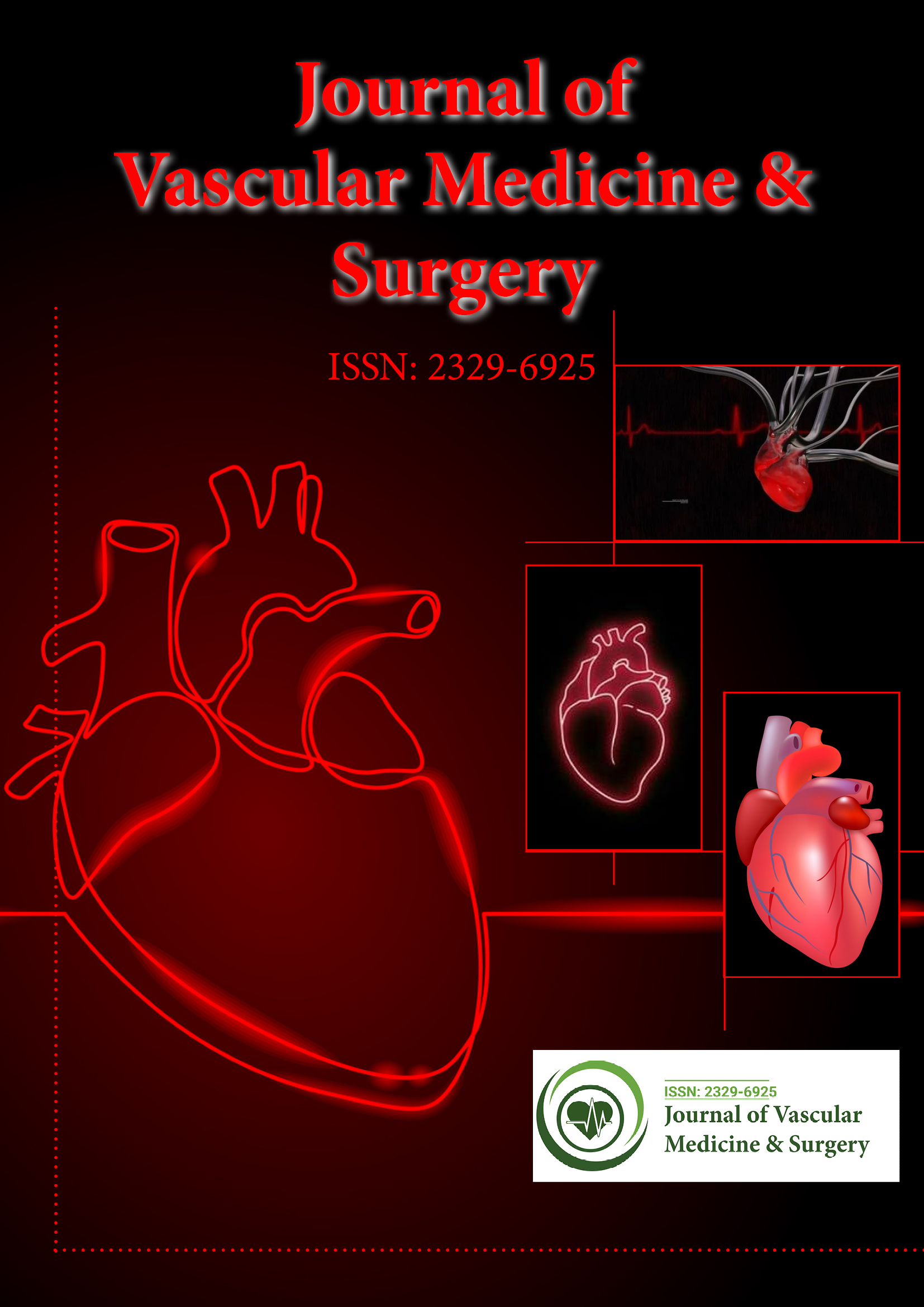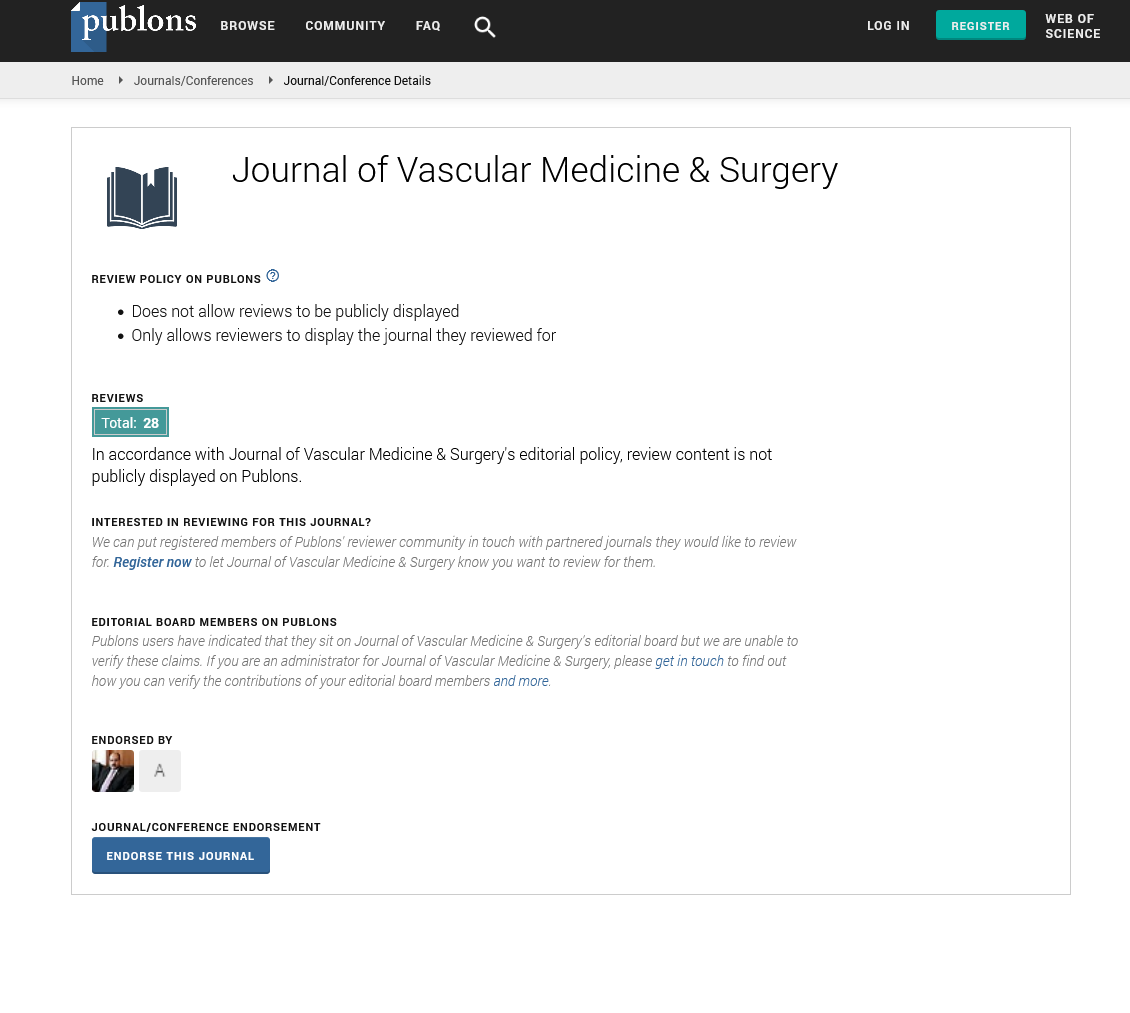Indexed In
- Open J Gate
- Academic Keys
- RefSeek
- Hamdard University
- EBSCO A-Z
- OCLC- WorldCat
- Publons
- Euro Pub
- Google Scholar
- SHERPA ROMEO
Useful Links
Share This Page
Journal Flyer

Open Access Journals
- Agri and Aquaculture
- Biochemistry
- Bioinformatics & Systems Biology
- Business & Management
- Chemistry
- Clinical Sciences
- Engineering
- Food & Nutrition
- General Science
- Genetics & Molecular Biology
- Immunology & Microbiology
- Medical Sciences
- Neuroscience & Psychology
- Nursing & Health Care
- Pharmaceutical Sciences
Commentary - (2021) Volume 0, Issue 0
Tracheo-innominate Artery Fistula Rare and Fatal Complication: Editorial
Received: 04-May-2021 Published: 28-May-2021, DOI: 10.35248/2329-6925.21.s5.e005
Editorial Note
Tracheo-innominate artery fistula (TIF) is a rare and fatal complication after tracheostomy. The diagnosis, treatment, and possible prevention of this disease are discussed in this study.
Tracheoinnominate fistula (TIF) is a rare (0.1%-1%) but a life- threatening complication after tracheostomy. The clinician caring for a patient with a tracheostomy must have a high suspicion for TIF bleedings that occur three days to six weeks after tracheostomy. TIF accounts for 10% of all bleeding associated with tracheostomies. Fifty percent of patients present with a sentinel bleed described as minor bleeding that spontaneously stops. The peak incidence is between seven to fourteen days after the procedure. Risk factors for developing TIFs include chronic steroid use, recent tracheostomy, overinflated cuff, high riding innominate artery, excessive movement of the tracheostomy, or low positioning of the tracheostomy.
Percutaneous dilatational tracheostomy (PDT) has become a standard method in basic consideration medication. Because of its boundless use, it keeps on drawing in contention and discussion. The UK Intensive Care Society as of late dispatched the TracMan preliminary which deduced in its introduction that PDT is 'a typical method however with restricted proof base to help its utilization.' We present three fatalities coming about because of tracheo-innominate course fistulae (TIF) after PDT.
Albeit conceivable to perform under nearby sedation, most of PDTs are performed under broad sedation with neuromuscular square on Critical Care Units by non-precisely prepared administrators. Confusions of PDT are customarily separated into ahead of schedule and late. Most of distributions focus on early difficulties including dying, pneumothorax, specialized disappointment and perioperative hypoxia. The major detailed late entanglements incorporate tracheo-oesophageal fistula, tracheomalacia and tracheal stenosis.
TIF is a remarkable yet hazardous difficulty that can happen after a tracheostomy. Detailed rate is 0.1–1% after careful tracheostomy, with top frequency 7–14 days post procedure.34 It is generally lethal except if treatment is founded immediately.56 We present a case-arrangement of tracheo-innominate blood vessel fistulae after PDT with histopathological affirmation.
Quick administration of this condition depends on its brief finding. The Utley move can promptly control the discharge. In this move, place a finger through the cut to apply direct tension on the supply route against the back sternum and pack it. A comparable tamponade impact can be accomplished through the over-expansion of the sleeve of the tracheostomy tube. One ought to quickly require extra help as the patient will require crisis aviation route control, and this will require extra staff to keep up control of drain all the while. The most ideal alternative is to put a handcuffed endotracheal tube past the site of dying. Additionally, the patient ought to have blood promptly accessible.
In the current time, most organizations have a huge bonding convention that can be immediately actuated. Contingent upon the establishment, the administration of this condition can be initiated by injury/intense consideration medical procedure, heart medical procedure, thoracic medical procedure, or vascular medical procedure groups.
Endovascular strategies are possibly ideal in a patient who is at restrictively high danger for open a medical procedure. It might likewise be ideal in patients with an earlier history of a middle sternotomy, thoracotomy, and chest radiation. For endovascular stent-unite arrangement, particular catheterization of th e innominate vein and sufficient seal zones are required.
Citation: Chawla H (2021) Tracheo-innominate Artery Fistula Rare and Fatal Complication: Editorial. J Vasc Med Surg.S5:e001.
Copyright: © 2021 Chawla H. This is an open-access article distributed under the terms of the Creative Commons Attribution License, which permits unrestricted use, distribution, and reproduction in any medium, provided the original author and source are credited.

